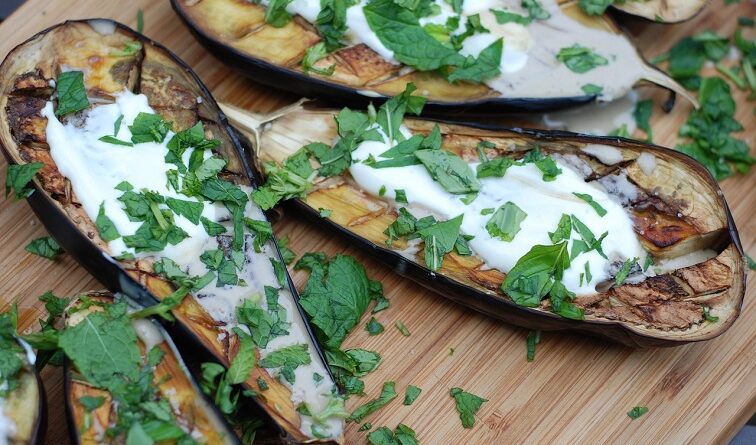Tahhiini : A Deep Dive into Flavor, Culture, and Innovation
Food is a cultural bridge that connects people across generations and geographies. Every dish carries within it a story of tradition, experimentation, and innovation. One element that has steadily gained recognition in global kitchens is tahhiini—a versatile ingredient that symbolizes both heritage and culinary creativity. While relatively simple in composition, tahhiini embodies a universe of flavors, applications, and cultural depth that make it essential in conversations about modern food.
Read More : Erothto
In this article, we will explore tahhiini’s role in food traditions, its nutritional value, its influence on culinary creativity, and its future in an ever-changing world of gastronomy.
Origins of Tahhiini
Tahhiini is often considered one of those ingredients that transcends borders. Its origins are deeply rooted in ancient culinary traditions, where simple foods were transformed into powerful flavors through grinding, mixing, and preserving. The essence of tahhiini lies in its ability to act as both a standalone product and a foundational ingredient in countless dishes.
Historically, tahhiini emerged in societies where seeds, nuts, and oils were central to daily diets. Communities discovered that by grinding specific ingredients into pastes, they could extend shelf life while creating a versatile base for soups, sauces, and spreads. Over centuries, tahhiini became not just food, but a cultural emblem of resourcefulness.
Tahhiini in Culinary Culture
Food culture thrives on shared experiences, and tahhiini is a perfect example of how one ingredient can unify diverse cuisines. From savory dishes to sweet desserts, it weaves seamlessly into various traditions.
Middle Eastern Influence:
Here, tahhiini finds its most prominent cultural expression. Used in sauces, spreads, and dips, it represents the region’s passion for simple yet powerful flavors.
Mediterranean Tables:
On Mediterranean dining tables, tahhiini is often mixed with herbs, citrus, and spices to create bold dressings that enhance salads and roasted vegetables.
Modern Fusion:
Contemporary chefs worldwide use tahhiini as a base for experimental dishes, merging it with global ingredients to invent entirely new culinary experiences.
The adaptability of tahhiini makes it a true culinary bridge—allowing it to move fluidly between traditional authenticity and modern innovation.
Nutritional Value of Tahhiini
Beyond its cultural and sensory appeal, tahhiini holds a special place in nutrition. At a time when health-conscious eating dominates conversations, this ingredient is increasingly recognized as a powerhouse of nutrients.
Healthy Fats:
Tahhiini is rich in unsaturated fats, which support heart health and balanced energy.
Protein Content:
For vegetarians and vegans, it provides a plant-based protein option.
Micronutrients:
It contains vitamins and minerals essential for bone health, immunity, and energy production.
Digestive Health: The fiber content in tahhiini supports gut wellness, making it an excellent addition to balanced diets.
This nutritional profile explains why tahhiini is embraced not only by traditional kitchens but also by health-focused food innovators.
Tahhiini in Everyday Cooking
One of tahhiini’s greatest strengths is its adaptability in home kitchens. Everyday cooking benefits from ingredients that are easy to use and versatile enough to elevate multiple dishes. Tahhiini excels in this regard.
Sauces and Dressings:
Blended with lemon juice, garlic, or herbs, tahhiini creates rich dressings for salads and roasted dishes.
Spreads and Dips:
Mixed into creamy dips, it pairs beautifully with bread, vegetables, and grilled foods.
Baking:
Chefs use it as a flavor enhancer in baked goods, bringing a nutty undertone to cookies, cakes, and breads.
Smoothies:
In modern kitchens, tahhiini has also entered wellness culture, added to smoothies for both flavor and nutrition.
Such versatility means that tahhiini is no longer limited to traditional dishes—it has become a staple in globalized cooking.
Tahhiini and Food Innovation
Food innovation thrives when traditional ingredients are reimagined in modern contexts. Tahhiini is a prime candidate for such innovation because of its neutral yet rich flavor profile.
Plant-Based Diets:
As plant-based lifestyles grow, tahhiini serves as a valuable alternative to dairy-based spreads and sauces.
Fusion Cuisines:
Creative chefs use it in unconventional ways, such as in sushi rolls, pasta sauces, or even ice creams.
Sustainable Eating:
Tahhiini aligns with sustainability movements, as it can be produced with minimal environmental impact compared to animal-based products.
Its capacity for reinvention makes tahhiini a key player in shaping the food landscape of the future.
Cultural Symbolism of Tahhiini
Beyond taste and health, tahhiini also symbolizes cultural values. Food often embodies the philosophy of the communities that create it, and tahhiini reflects resourcefulness, creativity, and unity.
Community Dining:
In cultures where communal dining is central, tahhiini-based dishes bring people together around shared platters.
Hospitality:
Serving dishes flavored with tahhiini is often considered an act of generosity and warmth.
Tradition and Modernity:
It simultaneously represents deep tradition and modern adaptability, embodying the continuity of culture.
Thus, tahhiini is more than an ingredient—it is an identity marker of food culture itself.
Challenges and Misconceptions
Despite its many strengths, tahhiini is not without challenges in broader adoption.
Flavor Complexity:
Its distinct taste may be unfamiliar or overwhelming to those unaccustomed to it.
Accessibility:
In some regions, quality tahhiini may be expensive or difficult to source.
Misunderstanding of Use:
Many people are unsure how to use tahhiini beyond traditional dips, limiting its culinary potential.
Addressing these misconceptions requires education and exposure, helping more people appreciate the ingredient’s versatility.
Tahhiini in the Global Market
With globalization, tahhiini has moved from regional kitchens to international supermarkets. Today, it is marketed not only as a traditional food item but also as a gourmet and health-conscious product.
Also Read : Irobux.com Redeem
Retail Growth:
Grocery stores worldwide now stock multiple varieties of tahhiini.
Restaurant Menus:
Chefs increasingly incorporate it into mainstream and fusion dishes.
Food Products:
From snack bars to sauces, tahhiini-based products are finding their way into packaged food markets.
This global recognition underscores its growing importance in both culinary and commercial contexts.
The Future of Tahhiini
Looking ahead, tahhiini is poised to play an even larger role in the world of food. As sustainability, health, and culinary creativity continue to dominate food culture, this ingredient aligns perfectly with emerging trends.
Sustainable Agriculture:
Its production methods can be refined to further reduce environmental impact.
Functional Foods:
With its nutritional density, tahhiini may become central in fortified and functional food products.
Global Fusion:
The future of gastronomy will likely see even more creative uses of tahhiini, bridging traditional cuisines with new innovations.
Tahhiini will remain a vital symbol of how food can evolve without losing its roots.
Conclusion
Food has the power to tell stories, connect cultures, and define identities. In this context, tahhiini stands out as an ingredient that represents much more than taste—it is a blend of heritage, health, and innovation. From its ancient origins to its modern reinventions, tahhiini has consistently proven its ability to adapt, inspire, and nourish.



